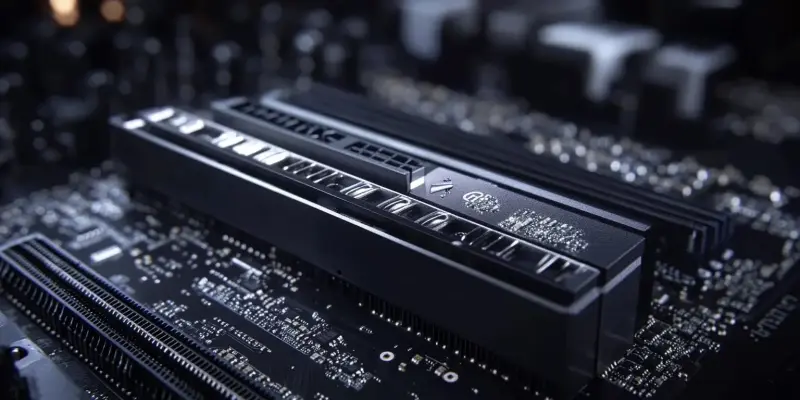G.Skill has stunned the tech world with the launch of the world’s first 128GB DDR5 RAM operating at speeds of 8,000 MT/s, branded as Trident Z5 Royal Neo. This release marks a significant milestone in computer memory technology, representing a leap in both performance and design. The luxurious aesthetics of these RAM sticks, featuring striking gold and silver finishes with gemstone-studded edges, are meant to turn a standard gaming or workstation rig into a visual masterpiece. With two 64GB sticks included in each set, users can now achieve a peak capacity that previously topped out at 96GB for similar high speeds.
Advanced Specifications and Applications
This new RAM is not just a pretty face; its advanced technical specifications make it highly suitable for applications demanding substantial memory capacity. Ideal for workstations used in fields such as 3D animation, content creation, and artificial intelligence, the Trident Z5 Royal Neo allows for smoother multitasking and faster processing speeds. While these specifications may be excessive for gaming alone, they provide significant benefits to professionals requiring reliable and high-speed memory solutions. The modules have undergone testing with CL44-58-58 timing on the Asus ROG Crosshair X670E Apex motherboard, paired with the powerful Ryzen 9 7950X chip. However, enthusiasts looking to adopt this top-of-the-line hardware should anticipate a premium cost, as pricing has yet to be disclosed.
Expanding Performance Horizons
Pushing the boundaries even further, G.Skill has announced an even faster DDR5-9000 memory kit with a slightly reduced capacity of 64GB (comprised of two 32GB sticks). This model features CL48-64-64 timing and has been put to the test on the Asus ROG Maximus Z790 Apex board with an Intel Core i7-13700K CPU. While the 64GB model offers a smaller capacity compared to the Trident Z5 Royal Neo, its enhanced speed may appeal to power users focused on achieving the highest possible performance benchmarks.
The introduction of these two new DDR5 RAM kits illustrates G.Skill’s commitment to pushing the envelope in memory technology. Such advancements promise not only improved performance but also greater efficiency for demanding applications. Whether for creative professionals, AI researchers, or tech enthusiasts, G.Skill’s latest offerings provide top-tier options for those seeking cutting-edge computing capabilities. These new innovations signal a significant leap forward in capacity and speed for RAM technology, setting a new standard for high-end computing hardware. While the luxurious design and substantial performance improvements come with a premium price tag, they cater to users requiring the highest levels of memory performance for specialized applications.
Looking Ahead: The Future of High-End Computing
G.Skill has taken the tech industry by surprise with the debut of the world’s first 128GB DDR5 RAM. Operating at a blistering speed of 8,000 MT/s, this RAM is branded as Trident Z5 Royal Neo and sets a new standard in computer memory technology. This release is not just about performance; it also features stunning design elements, including luxurious gold and silver finishes and edges adorned with gemstones, turning any ordinary gaming or workstation setup into a work of art. Each set includes two 64GB sticks, allowing users to achieve an impressive total capacity of 128GB. Previously, the maximum capacity available at these high speeds was 96GB, making this a groundbreaking development. This RAM is particularly appealing for those who require both superior speed and capacity, such as gamers, video editors, and other power users. With this launch, G.Skill has clearly demonstrated their commitment to pushing the boundaries of performance and aesthetics in the realm of computer hardware.

